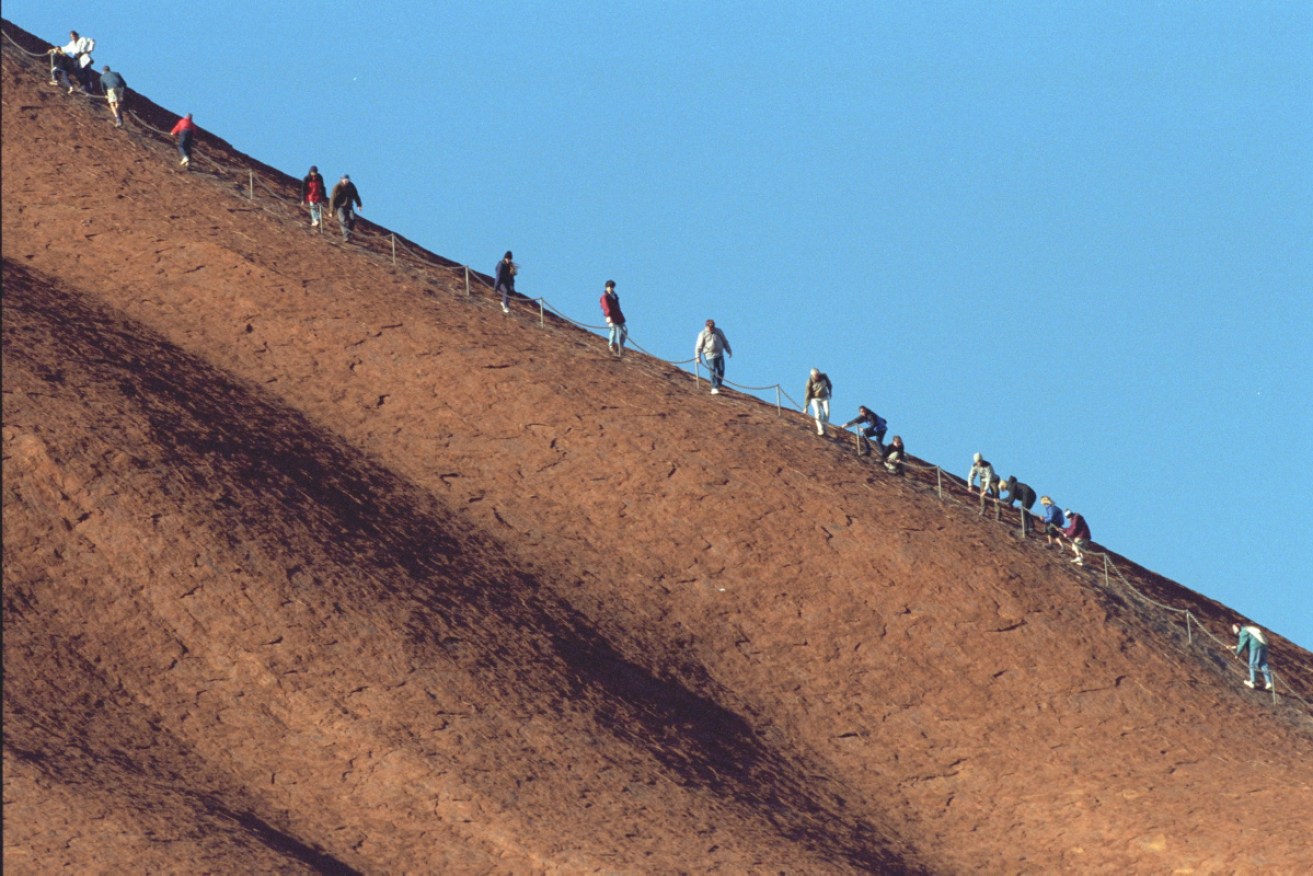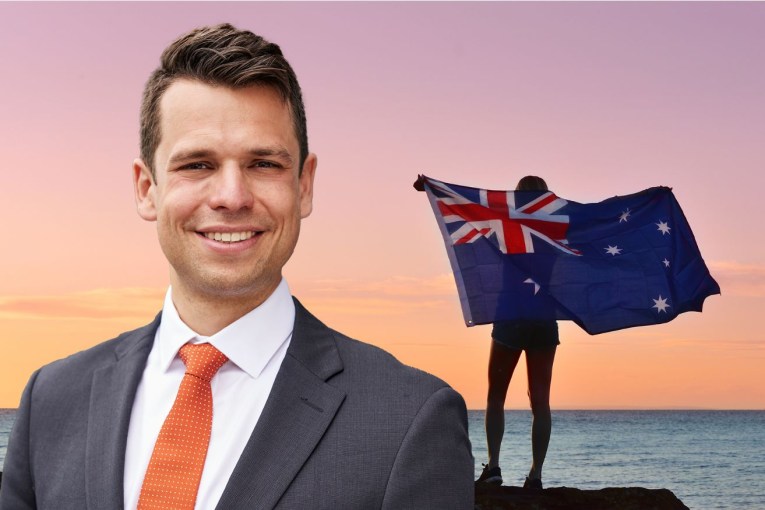Low point: The rush to climb Uluru before the ban exposes a hollow centre


The Uluru climb will finally close on October 26. Photo: Getty
“Heads on ’em like mice”. It’s an old Australian bush saying expressing surprise at the large numbers of any given thing.
There sure have been a lot of mice heads at Uluru in recent months.
With the climbing of the world’s largest monolith set to be banned on October 26, Australians – and let’s be clear, mostly us white guys – have been turning up en masse to stake bragging rights for the rest of eternity.
The images on social media this week of tourists lining up to get to the top of the rock – not to mention the numerous Facebook posts of ruddy faced kids with mum and dad surveying vast miles of red sand – highlight how far we still have to go in respecting traditional culture.
Sure, we seem able to delight in the achievements of Indigenous sports stars – well, provided they don’t call out casual racism – and we love the warm fuzzies that come from international visitors embracing Indigenous art. But let’s not do anything too drastic.
No, nothing that impinges on our right to do whatever the hell we like when we are on land that has spiritual significance to the first Australians.
Tweet from @Picketer
October 26 marks the 34th anniversary of the handover of the Uluru title deeds to Anangu traditional owners by then Governor-General Sir Ninian Stephen. The land was leased back for 99 years as a National Park.
The closure of the climb – which was only made possible in the 1960s by the installation of a handrail – has been many years in the making.
It has even been done softly, softly to avoid hurting the feelings of those who want to climb, not to mention with one eye on the millions in tourist dollars that are at stake.
The decision to close the climb was tied to a decrease in people taking the opportunity, with an education campaign in the past decade instead encouraging the stunning cultural walks around the base of the rock.
This has had the desired effect. In recent years the numbers of those wending their way up the now scarred rock face have dropped from above 75 per cent of visitors to below 30 per cent.
Like many people of my generation, as a young man I also climbed Uluru. There was not much else to do there then. But I’ve visited several times since and with the cultural programs on offer there is little enough time on a normal duration visit to take it all in.
Climbing was what you did unthinkingly in the early 1980s before the land was handed back and when most Australians still thought it impossible for a dingo to snatch a baby from a campground.
After many years of trying to promote understanding of the traditional reasons for not climbing, the ban is finally here – and yet it is clearly still not accepted by some.
Tweet from @Malarndirri19
While the climbing path is said to overlay parts of the path of the sacred sand python, in Australia’s seemingly endless and pointless culture wars this is reason enough for Pauline Hanson and her ilk to invite public ridicule of the need for a ban.
Meanwhile, the same culture warriors are staunch in their defence of religious freedoms for the rest of Australia. Try abseiling down the spire of St Patrick’s cathedral to the now famous sacristy and see how far you get.
What is missing in all these debates about culture is that we really have none – Australia’s uniqueness has been ebbing away for years as we morph from forelock-tugging wannabe Brits into a pale little America.
https://www.instagram.com/p/B3MaevTBXNo/?utm_source=ig_web_copy_link
We are a country without our own flag or head of state.
Our politics has been dominated by wedges on immigration, refugees, dole bludgers and terrorism. No great heights there.
Our idioms are more American these days than old Australian.
The notion of mateship extends, as our smirking prime minister would have it, to a guy like Donald Trump – who once would never have passed a country pub sniff test.
Our egalitarian streak is strung out, we trample our wild places for the economy’s sake and and put self-interest ahead of all else.
If the race to climb Uluru can be seen as a yearning for a simpler time when Australia was ‘relaxed and comfortable’ and lacking in political correctness, then there is one thing the pipsqueaks at the summit should consider.
The real stories are all down below.
Stripped of any reference points, on top of Uluru there’s nothing much to see but sand and blowflies for endless miles.
Up there, alone with Australia’s emptiness, all those mice look even smaller.








